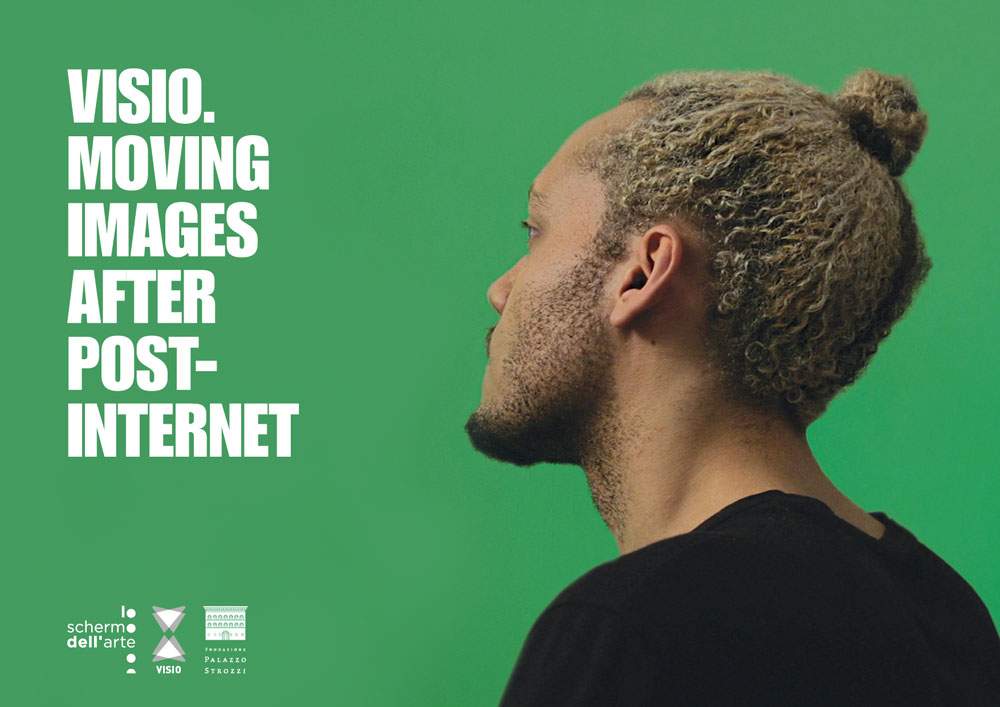From November 13 to December 1, 2019, as part of Lo Schermo dell’Arte Film Festival, Palazzo Strozzi presents the contemporary art exhibition Visio. Moving Images After Post-Internet, curated by Leonardo Bigazzi.
The exhibition will bring together the works of the twelve artists under 35 who participated in the 8th edition of VISIO. European Programme on Artists’ Moving Images.
These are the twelve artists working with moving images: Rebecca Jane Arthur (1984, Great Britain/Belgium), Miguel Azuaga (1988, Spain/Germany), Patrick Alan Banfield (1984, Great Britain/Germany), Enar de Dios Rodriguez (1986, Spain/Austria), Eva Giolo (1991, Belgium), Inas Halabi (1988, Palestine/Holland), Polina Kanis (1985, Russia/Holland), Adam Kaplan (1987, Israel/Germany), Valentina Knezevic (1989, Croatia/Germany), Agnieszka Mastalerz (1991, Poland/Germany), Jacopo Rinaldi (1988, Italy), Igor Simic (1988, Serbia).
In recent years, the digital revolution and the acceleration imposed by new media have profoundly changed the language of moving images and their exhibition models. Computer screens and smartphones have become the main tool by which images and videos are shared, thus redefining the relationship between audience and artwork. There has been the rise of the so-called "post-internet condition," a definition adopted since the end of the first decade of the 2000s to describe a practice of art making that could no longer ignore the confrontation with the growing hyperconnectivity of the network, both in conceptual terms and in terms of production and distribution. The exhibition therefore aims to explore these transformations, the legacy of the post-internet phenomenon and the possible causes of its eventual overcoming.
"The exhibition VISIO. Moving Images After Post-Internet aims to reflect on the influence that the digital revolution of the last decade and the post-internet phenomenon have had on the generation of artists who experienced these changes in their formative years. The selected works address fundamental issues of our time such as the normalization of violence, gender identity, the politics of borders, the privatization of knowledge, the boundary between real and virtual, the value of memory, the relationship between man and animal, and the constant sense of precariousness of existence. On display are technical and conceptual elements typical of post-internet practices, such as the use of virtual reality (VR), CGI images, video games and videos appropriated from the web. However, there are also artists who conceptually have decided to distance themselves from this type of aesthetic, through a more cinematic language, film on film and found footage," said curator, Leonardo Bigazzi.
"The Screen of Art Film Festival represents an important reality in the Florentine cultural scene, one of the many excellences present in the city with which Palazzo Strozzi has always loved to collaborate. In particular, the VISIO project curated by Leonardo Bigazzi has already proved to be one of the most interesting initiatives on the art of moving images, and from November 13 to December 1 the spaces of the Strozzina at Palazzo Strozzi will host a new edition entitled Moving Images After Post-Internet, which brings together works by 12 artists under 35. Promoting young artists is an opportunity that is coherently placed within the cultural policy of Palazzo Strozzi, which is increasingly a point of reference for the art of the present," said Arturo Galansino, Director General of the Fondazione Palazzo Strozzi.
For info: www.schermodellarte.org
Hours: Nov. 13 to 17, daily from 10 a.m. to 8 p.m.; Thursdays from 10 a.m. to 11 p.m. Nov. 18 to Dec. 1, daily from 12 to 8 p.m.; Thursdays from 12 to 11 p.m.
 |
| Visio. Moving images in the post-internet |
Warning: the translation into English of the original Italian article was created using automatic tools. We undertake to review all articles, but we do not guarantee the total absence of inaccuracies in the translation due to the program. You can find the original by clicking on the ITA button. If you find any mistake,please contact us.